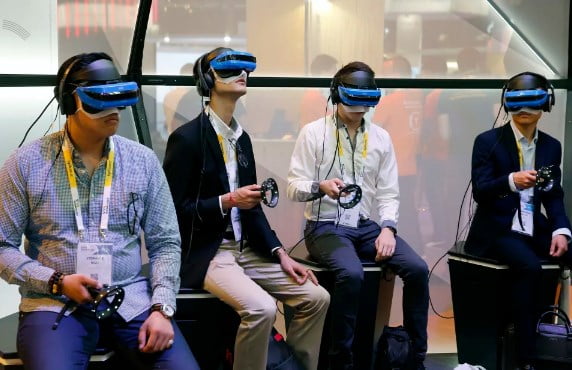Windows Mixed Reality is heading to a farm upstate. Microsoft is shutting down the platform, according to an official list of deprecated Windows features. This includes the garden variety Windows Mixed Reality software, along with the Mixed Reality Portal app and the affiliated Steam VR app. The platform isn’t gone yet, but Microsoft says it’ll be “removed in a future release of Windows.”

Microsoft first unveiled Windows Mixed Reality back in 2017 as its attempt to compete with rivals in the VR space, like HTC and Oculus (which is now owned by Meta.) We were fascinated by the tech when it first launched, as it offered the ability for in-person shared mixed reality. The pricey Apple Vision Pro could offer a similar experience when it presumably launches in February.
Microsoft’s platform was ultimately adopted by several VR headsets, like the HP Reverb G2 and others manufactured by companies like Acer, Asus and Samsung. The Windows Mixed Reality Portal app allowed access to games, experiences and plenty of work-related productivity apps. However, it looks like the adoption rate wasn’t up to snuff, as indicated by today’s news.
Despite the imminent end to the platform, it doesn’t look to be impacting Microsoft’s other mixed-reality ecosystem, the HoloLens 2. Microsoft added a Windows 11 upgrade and other improvements for the business-focused headset earlier this year, according to The Verge. It also started shipping them out to the Army for combat tests.
However, not everything’s rosy in HoloLens land. Reports indicate that Microsoft has stopped development on the HoloLens 3. A report in 2022 said that the company teamed up with Samsung to make an unannounced mixed-reality device, but Microsoft spokesperson Frank Shaw said that Microsoft remains “committed to HoloLens and future HoloLens development.”
Additionally, Microsoft has made sweeping cuts throughout its VR division, leading to layoffs and the discontinuation of the AltspaceVR app. The company is, however, still developing its proprietary Mesh app that lets co-workers meet in a virtual space without a headset.

